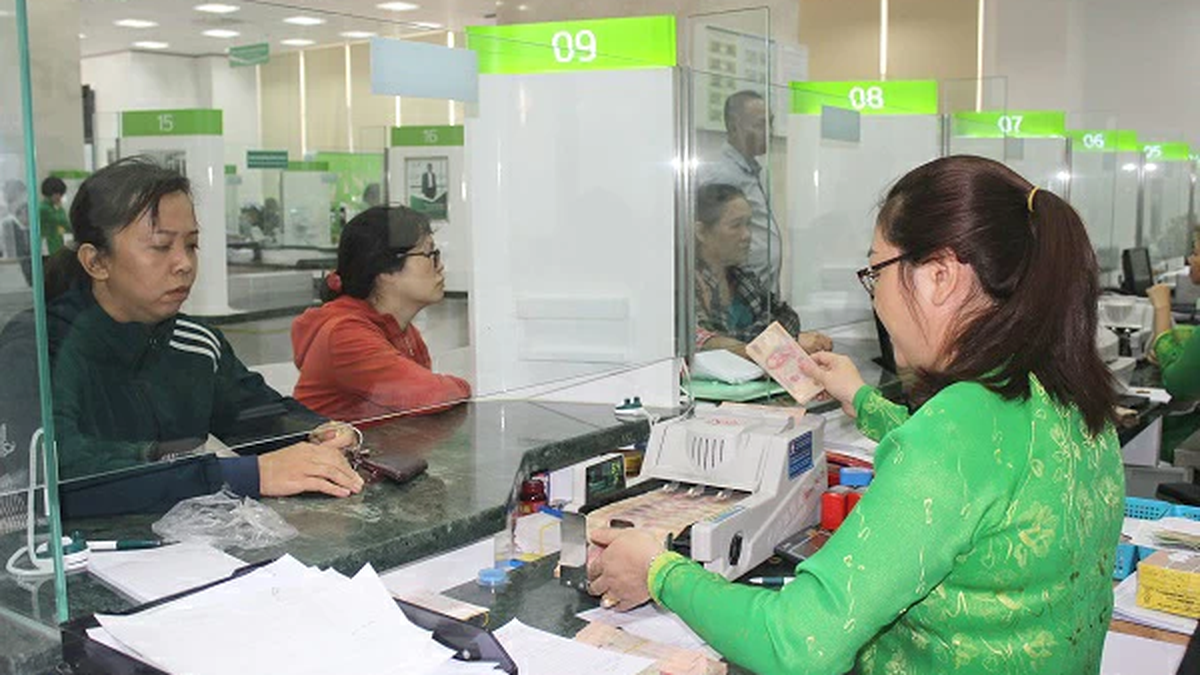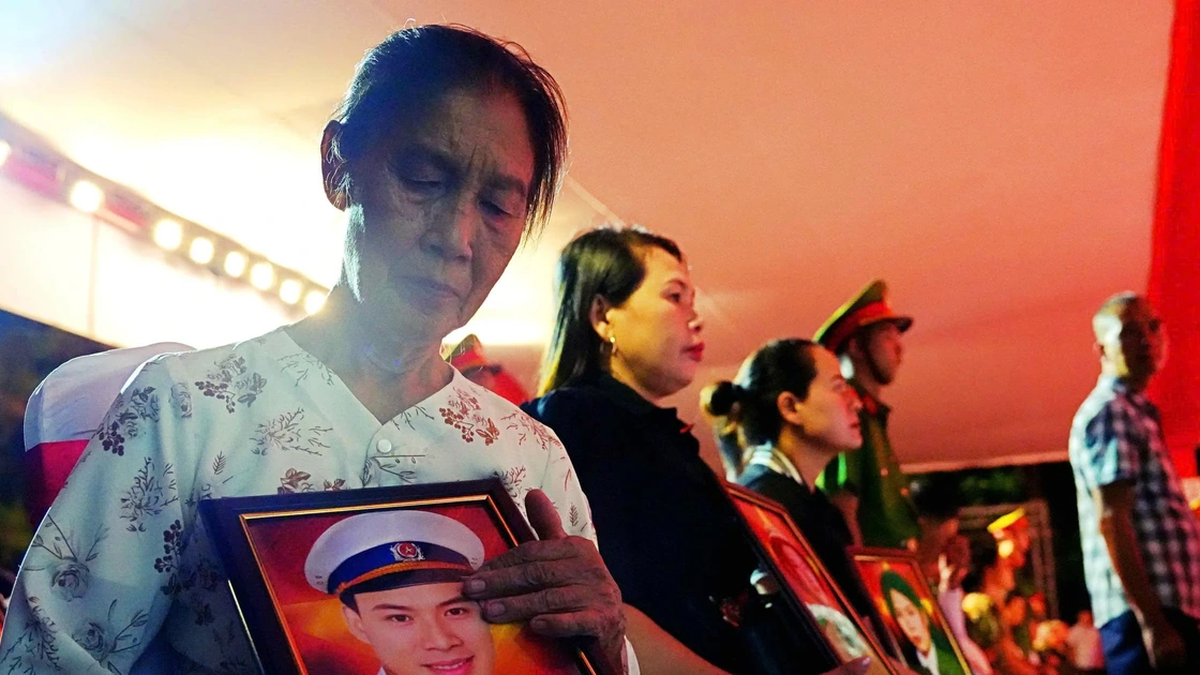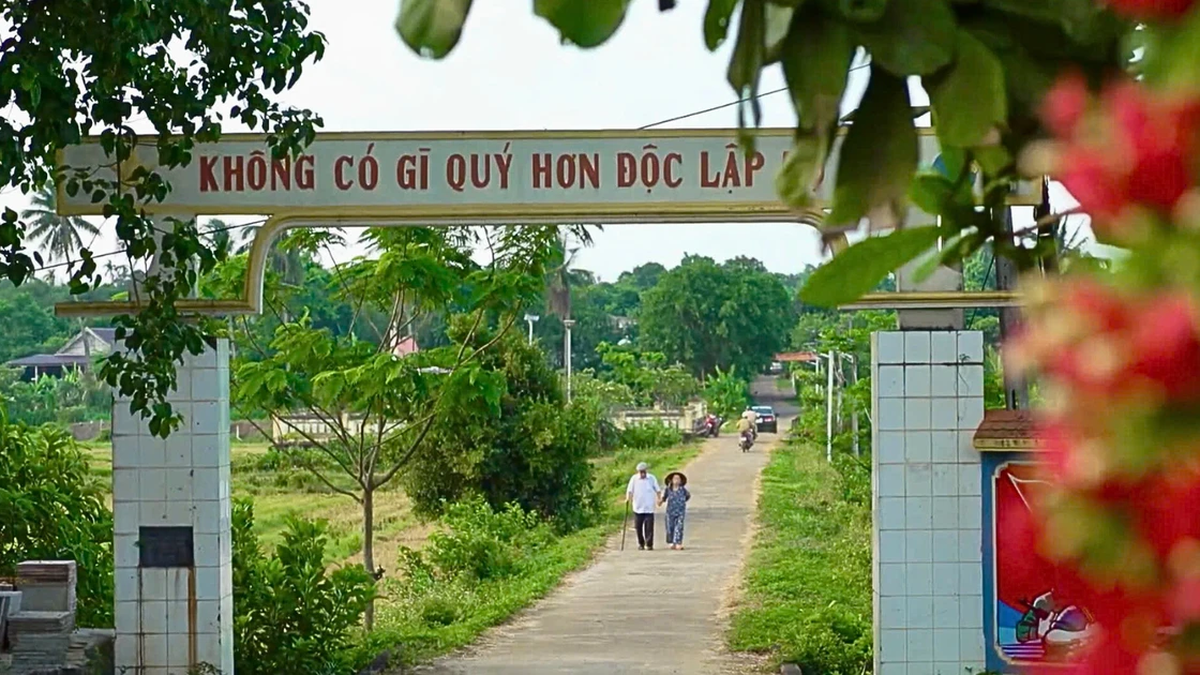Long Hung Commune (Chau Thanh District, Tien Giang Province) - the homeland of the Southern Uprising, the land of the "American extermination belt" of the past is the homeland of many heroes who fought and sacrificed for the revolutionary cause.
THE PLACE OF IMPORTANT HISTORICAL EVENTS
According to the book History of the Party Committee and People of Long Hung Commune (1930 - 2005), during the period of resistance against the French, the Long Hung Communist Party Cell was established in 1930. Comrade Le Van Giac was chosen as the first Secretary of the Cell. In 1940, all communes in Chau Thanh district launched a movement to practice martial arts to prepare for the uprising.
In March 1940, Chau Thanh District Party Committee met in Vua hamlet (Long Hung commune) to disseminate the policy of the Southern Regional Party Committee on the order to prepare for an armed uprising. In May 1940, comrade Nguyen Thi Ngoc Tot (Muoi Thap), Regional Party Committee member, also a daughter of Long Hung, returned to the commune to deploy the plan to prepare for the uprising.
 |
| National historical site of Nam Ky Khoi Nghia - where the red flag with yellow star first appeared. |
In Long Hung commune, at exactly 0:00 on November 23, 1940, the Long Hung commune Party Cell received the order to revolt. The commune guerrillas mobilized the entire population to light torches, beat drums and gongs, and use sticks, spears and halberds to occupy the Long Hung commune office. At the same time, in front of the gate of the provincial Uprising Committee headquarters located at Long Hung Communal House, a slogan was hung: "Democratic Republic of Vietnam".
According to the book "My Tho - Go Cong in the Southern Uprising (1940)" recorded: "On November 23, 1940, the revolutionary government of My Tho province was established and organized a rally with more than 3,000 participants at Dinh Long Hung to introduce itself to the people".
On the morning of November 23, 1940, the Uprising Committee assigned people to hang the red flag with a yellow star on the top of the banyan tree in front of Long Hung Communal House (the banyan tree still exists today). This was the place where the red flag with a yellow star flew for the first time, demonstrating the revolutionary spirit never seen before. Long Hung Communal House was also the place chosen by the Provincial People's Revolutionary Court to hold the first trial in the history of the Vietnamese revolution to try the evil henchmen.
RED ADDRESS
The revolutionary government only existed for 49 days before being bloodily suppressed by the French colonialists. Long Hung history will never forget the heroic and decisive event on January 4, 1941 when the enemy mobilized all their forces to surround the Cay Me field and Tram Bau hill (Long Hung commune).
Knowing that they could not resist the enemy, four comrades: Le Van Giac - Secretary of Long Hung Party Cell, Nguyen Van Ghe - Provincial Party Committee member, Le Van Quoi - Chau Thanh District Party Committee member and comrade Nguyen Van Quan - Chau Thanh District Party Committee officer stayed to fight until the last bullet, then drew their swords and committed suicide, determined not to surrender to the enemy.
Today, Long Hung Communal House is a national historical relic of the Southern Uprising of Tien Giang province and Go Me relic has become a red address not only for today's generations of Long Hung commune, but also for young generations in and outside the province.
From 1945 to 1947, Long Hung was chosen as the provincial base to organize and command the resistance war against French colonialism. Settling in Long Hung, the provincial agencies selected many cadres and soldiers to build the Armed Forces. Comrade Chin Kinh (Nguyen Tan Thanh) was initially in charge of protecting the base, then became the Head of the Provincial Military Committee, participated twice in capturing the Vam Xang post and building the first local military company of the province, held a military departure ceremony in mid-1947 at Mrs. Ba Ngon's house, near Ong Ho market.
After the Geneva Agreement in 1954, the Provincial Party Committee's leadership agency was stationed in Long Hung to lead the organization to change the direction of the struggle from armed to political struggle. Although it was secretly separated, the people all knew and protected it safely. For 2 years, the enemy did not know that the Provincial Party Committee agency was located here.
 |
| Young generation of Long Hung commune burn incense to commemorate heroic martyrs at the national historical site of Nam Ky Khoi Nghia. |
During the resistance war against the US, Long Hung commune was a fiercely attacked area. In early June 1966, the US began building the Dong Tam base and completed it in December 1966. In Long Hung commune, the base was located in two hamlets, Long Thoi and Long Binh B, with an area of about 200 hectares.
After the base was completed, it created new difficulties for the army and people of Chau Thanh district, especially the communes in the belt that directly confronted the Americans such as Binh Duc, Long Hung, Song Thuan, Thanh Phu, Vinh Kim. In such a context, together with the people who stayed in the belt area, the Party Committee of Long Hung commune, together with the forces and people of the commune, achieved many feats, with many examples of "Brave American killers" such as comrade Nguyen Van Tau (Bay Tau) in Long Binh A hamlet who had the achievement of killing 72 Americans. The people joined the guerrillas in fighting the enemy, some participated in sharpening spikes, some planted grenades. The families of Mr. Le Van Kich and Mr. Ba Chuong set up a fighting fence to prevent the enemy from sweeping and dug tunnels to hide cadres.
Many young guerrillas aged 14 and 15 also participated in the attack on the outpost. In particular, the young guerrilla of Long Hung commune, Ho Van Nhanh, although only 16 years old, entered the American base over 130 times to remove 4,500 shells of various types and guided guerrillas and soldiers to remove 1,000 shells, serving the troops in over 30 battles, killing 130 Americans and hundreds of puppet soldiers. Ho Van Nhanh heroically sacrificed himself while removing a mine and was posthumously awarded the title of Hero of the People's Armed Forces (LLVTND) by the State on November 6, 1978.
Like People's Armed Forces Hero Ho Van Nhanh, Ms. Le Thi Hong Gam (Tu Gam) also secretly joined the commune guerrilla team in 1967 when she was only 16 years old. Notably, on April 18, 1970, to prepare for the night battle, she and two female guerrillas went to buy food for their comrades. When they were in the middle of the field, they were discovered by the enemy, who intended to capture them alive. She was not shaken, calmly aimed at the helicopter and fired, one of them burned and fell on the spot.
The second helicopter swooped down to drop troops and surround the area. In that life-or-death moment, she did not flinch and shot down three more enemies. Because the enemy was too numerous, they concentrated their firepower on her, seriously injuring her and heroically sacrificing her life when she was only 19 years old. On September 20, 1971, Le Thi Hong Gam was posthumously awarded the Third Class Liberation Medal and the title of Hero of the People's Liberation Armed Forces by the Provisional Revolutionary Government of the Republic of South Vietnam. She was the first female Hero of the People's Liberation Armed Forces to be awarded the title in Tien Giang province.
Long Hung commune also has another People's Armed Forces Hero, comrade Tran Huu Danh (real name Tran Van Danh, born in 1916, died in 1988). He joined the revolution in January 1934. The highest position he held was Deputy Secretary of the Provincial Party Committee, Lieutenant Colonel, Political Commissar of the My Tho Provincial Military Command during the resistance war against the US to save the country.
At the age of 18, comrade Tran Huu Danh joined the secret organization of comrade Nguyen Thi Thap in his home commune. On March 9, 1945, he was the first person to seize 5 guns from the enemy in My Tho and bring them back to equip the commune's forces. During his revolutionary activities, he was trusted by his superiors to take on many different tasks and achieved many outstanding achievements.
It can be said that Long Hung commune is a land of "talented people" when many outstanding people contributed their efforts and blood to the process of building and protecting the country with places and people that will last forever.
There are still many other outstanding children of Long Hung commune that have not been mentioned in this article, but all of them crystallize into the glorious history of the heroic commune of the People's Armed Forces of Long Hung, with 614 martyrs who fell for national independence. Those glorious history pages have contributed to the overall success of the revolution and are being continued by today's generations of Long Hung commune.
PHAN CAO THANG (synthesis)
.
Source


































































































Comment (0)